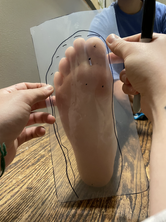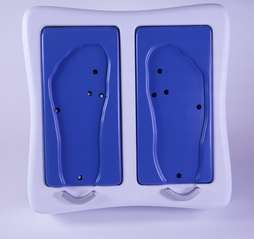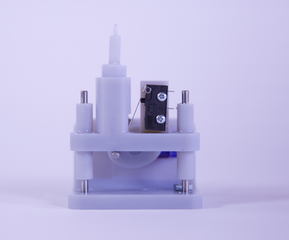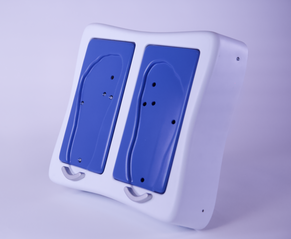Peripheral Neuropathy Autonomous Tester
As part of MIT’s 2.009 class, I helped design the Peripheral Neuropathy Autonomous Tester (PNAT)—a medical device that lets patients monitor neuropathy progression at home. I led user research with doctors and patients, then transitioned to lead the modeling team, focusing on the XY motion system and guiding the design from concept to prototype.
Overview
In my senior fall, I took MIT’s legendary 2.009: Product Engineering Process class, where 17 of us worked together to bring an idea from concept to prototype in just one semester. In this intensive class, students develop an understanding of product development phases and experience working in teams to design and construct high-quality product prototypes. After weeks of brainstorming and weighing trade-offs, we chose to build the Peripheral Neuropathy Autonomous Tester (PNAT): a device that helps people with diabetes monitor the progression of peripheral neuropathy from home.
User Research
I started on the user outreach team, interviewing 8 doctors and 6 patients to understand their pain points and needs. It wasn’t easy. Finding people willing to share their experiences, scheduling calls, and asking the right questions without overwhelming them was truly challenging, but it gave us crucial insights. Those conversations shaped how we approached accessibility, usability, and what "success" would mean for real users.
After gathering insights, I transitioned into the modeling team and later became its leader. My focus was on the XY motion system: the mechanism (inspired by 3D printers) that moves the testing probe across a plane with precision. I worked in Fusion 360, led prototyping cycles, and iterated designs until we had a reliable mechanism ready to integrate with the rest of the device.
From Research to Prototyping



Working in such a large, interdisciplinary team taught me the value of both user-centered design and clear task ownership. We had to break the project into task forces, align across research, modeling, and web development, and constantly balance speed with quality. By the end of the semester, we delivered a working prototype and a shared sense of pride in having built something that could make a real difference for people managing diabetes.
Learnings
Prototype 1
Final Design
Sketch Model Review
Assembly Review
Modelling Update











